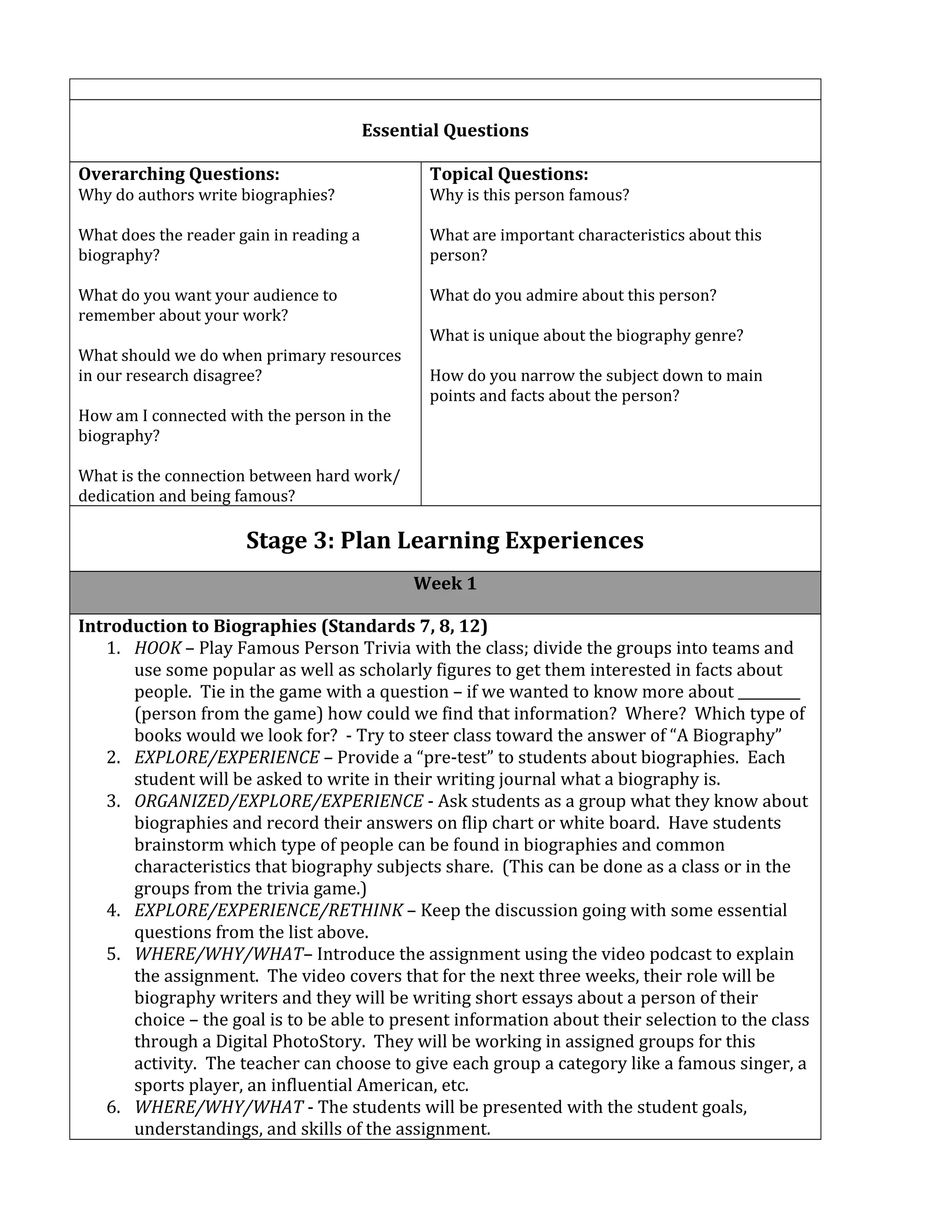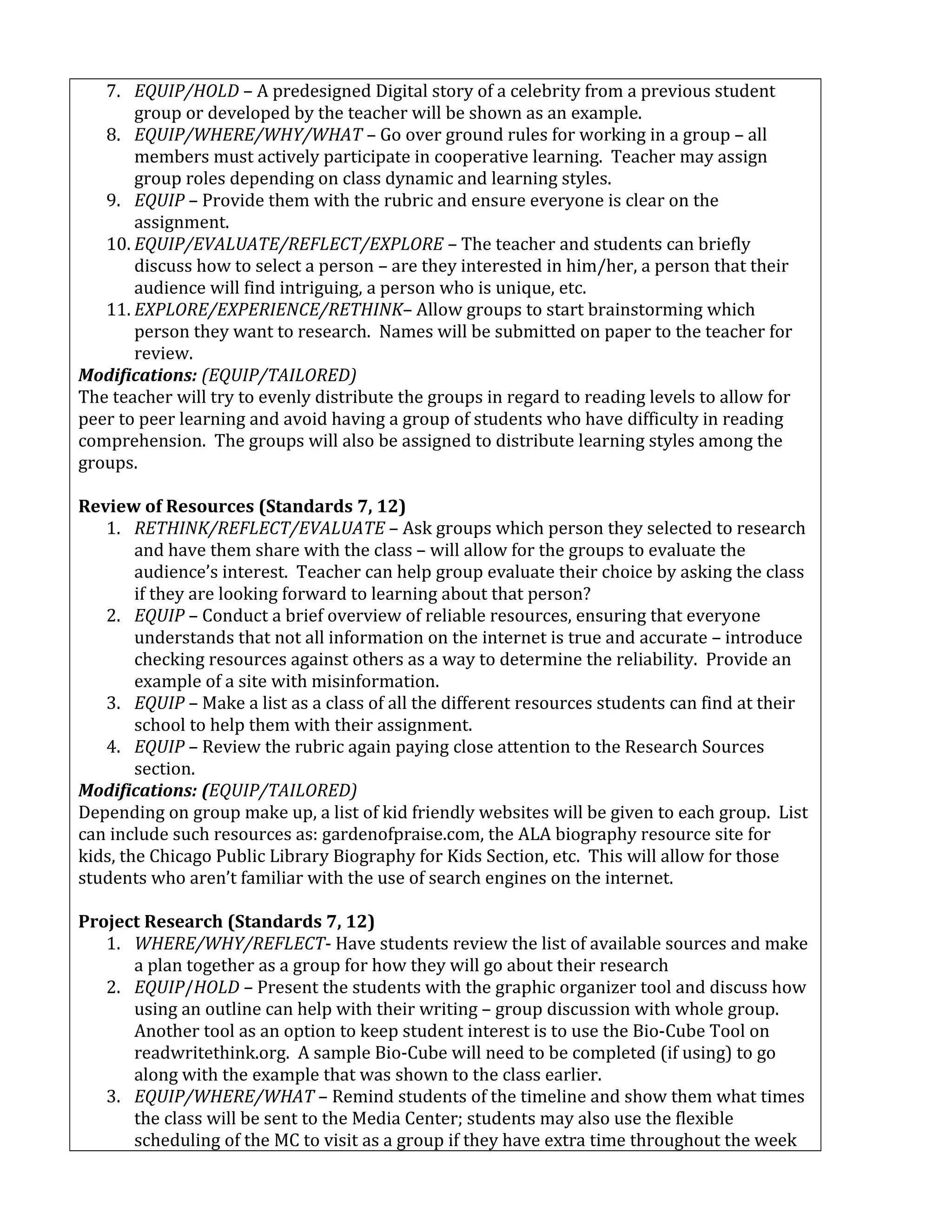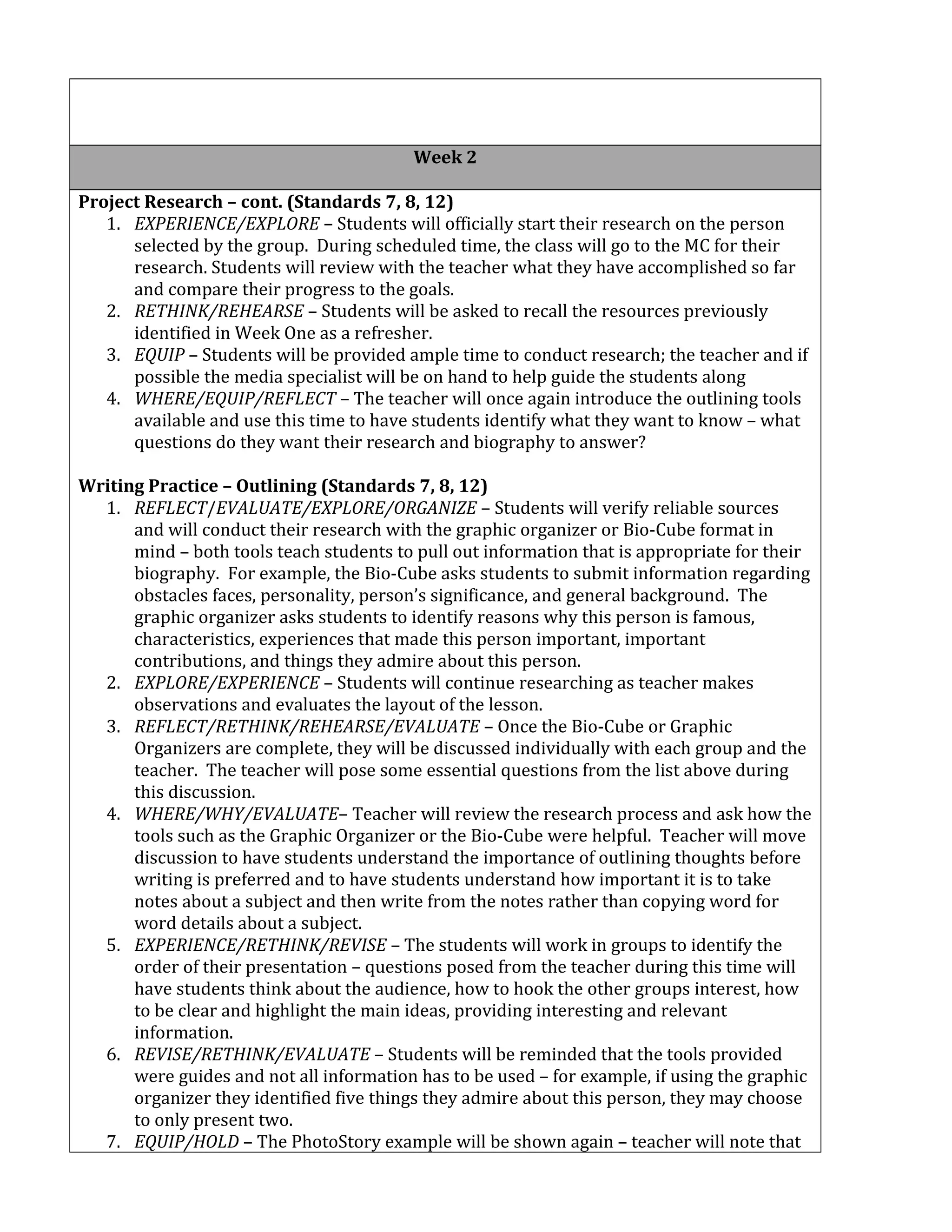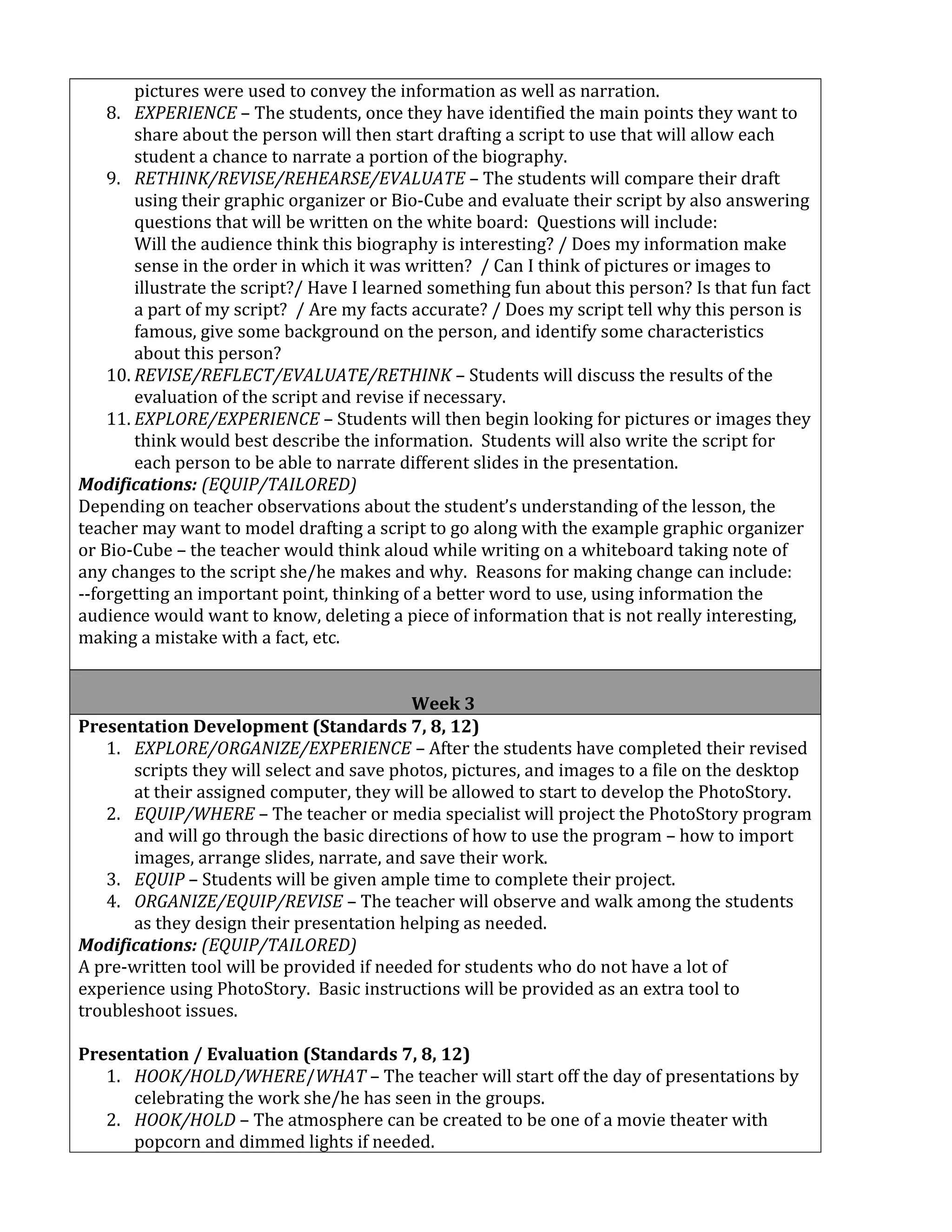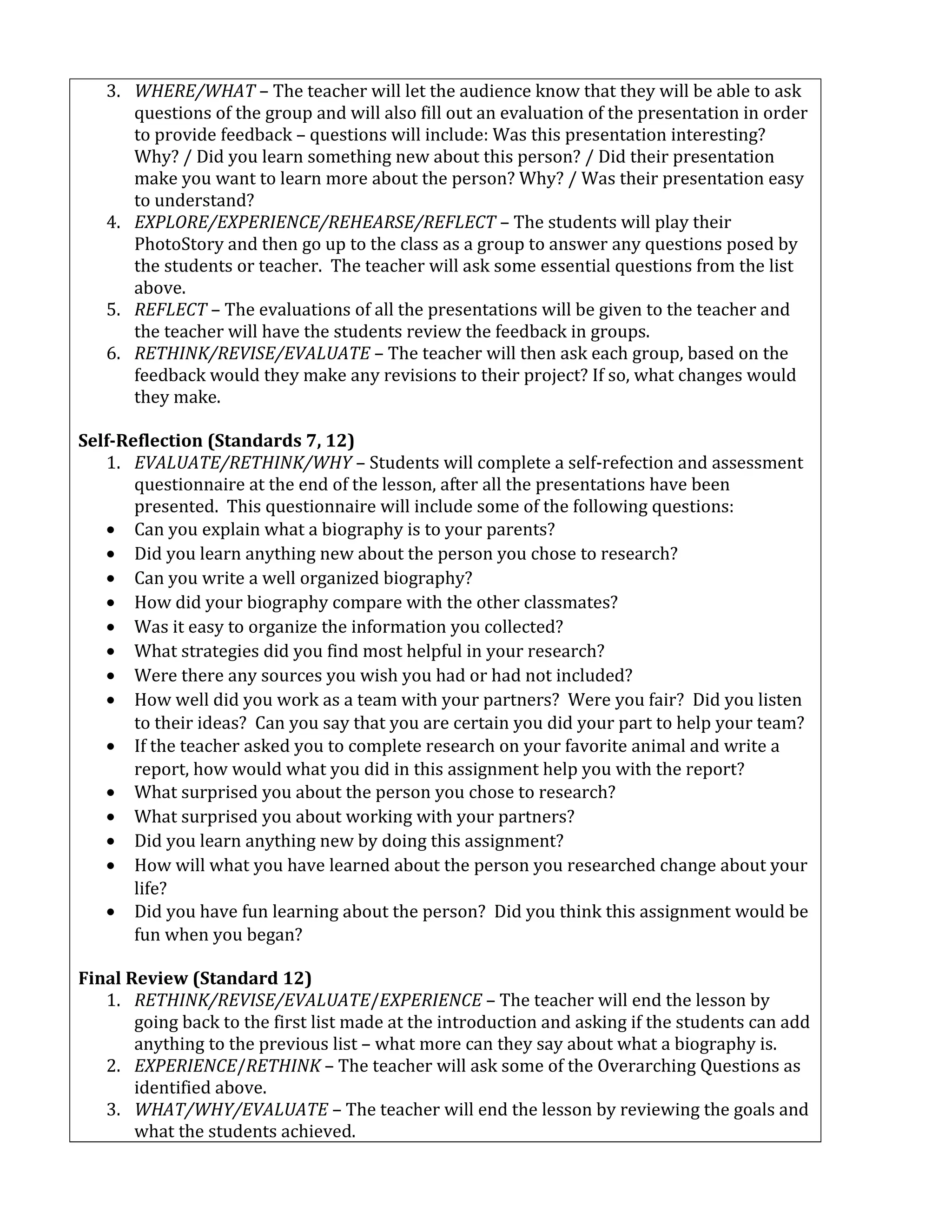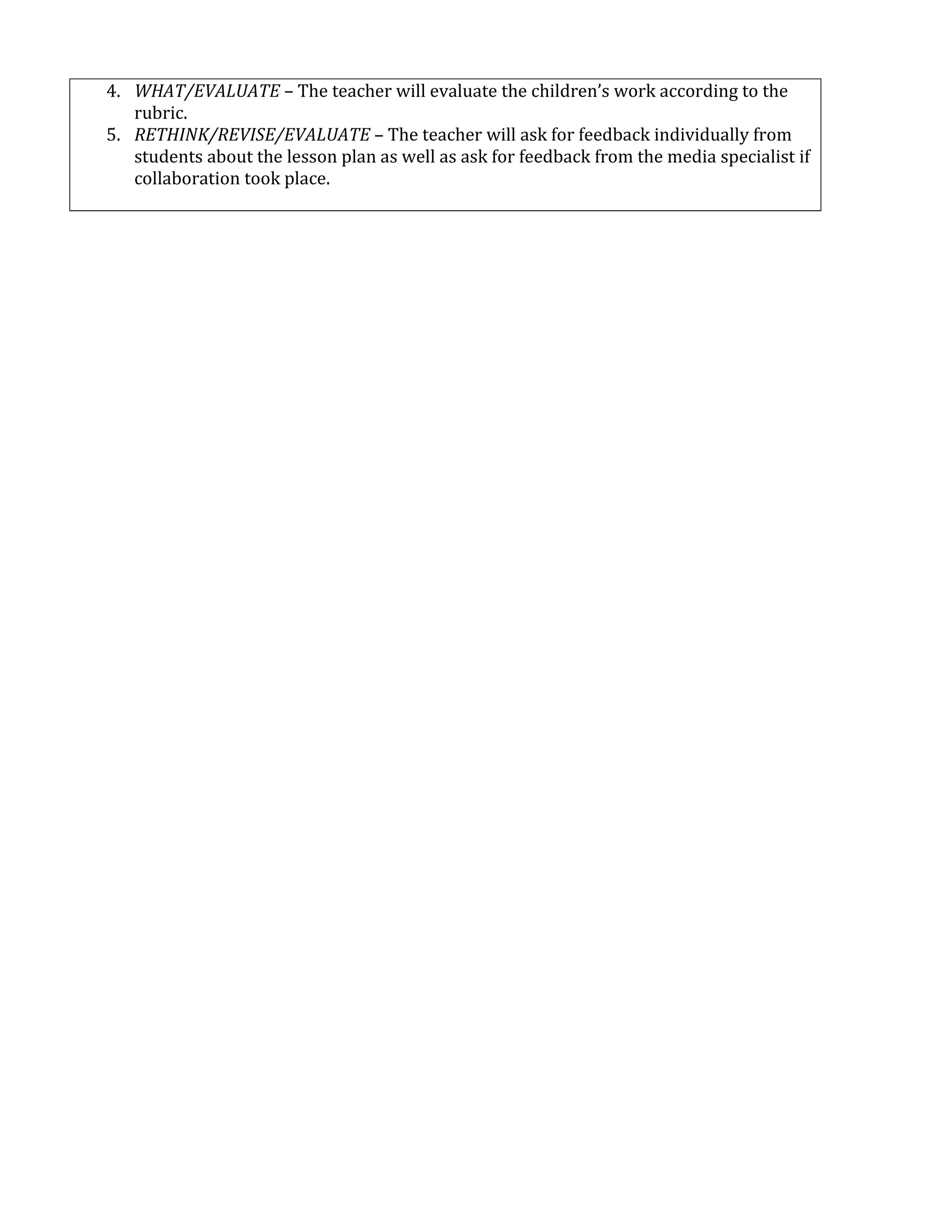This document provides a unit plan for teaching 5th grade students about biographies. The unit spans 3 weeks and uses a project-based learning approach where students work in groups to research and create a digital photo story biography about a famous person. Key activities include an introduction to biographies, reviewing research resources, conducting research in the media center, outlining information, drafting and revising scripts, developing the digital stories in Photostory, presenting the stories, self-reflection, and a final review. The unit is aligned to national English language arts standards and incorporates modifications for differentiating instruction.

